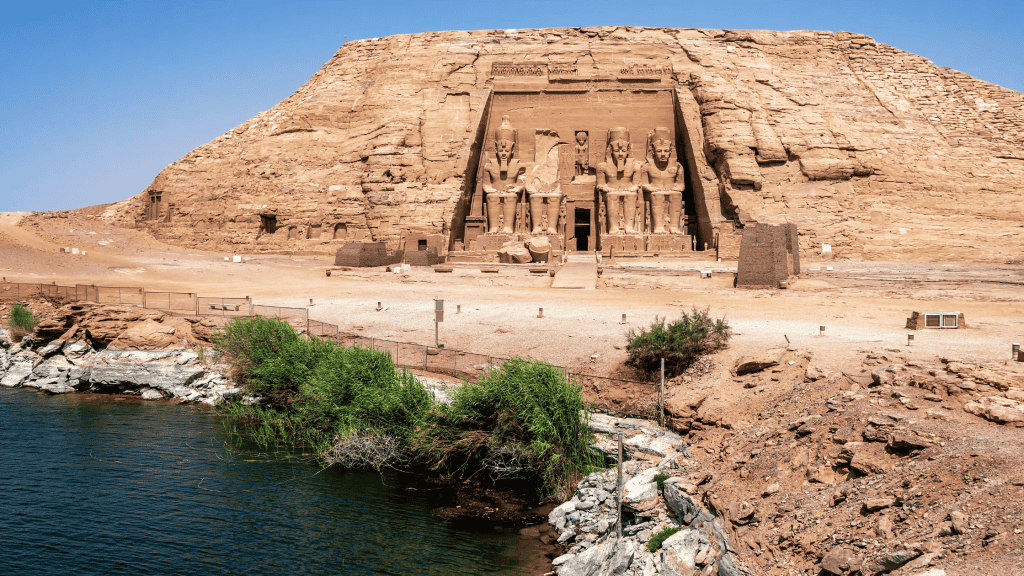A childhood documentary sparked a lifelong fascination with ancient Egypt. From Ramses the Great to Nefertari’s diplomacy, this is the story behind my next journey.
Egypt has lived in my imagination long before it earned a place on my travel map. Long before I learned that archaeologists frequently disagree (with great enthusiasm) on which Pharaoh did what, or that hieroglyphs are essentially beautifully carved receipts of power, I had already fallen under Egypt’s spell.
It began when I was eight years old.
My father was watching a documentary about the Gods of Egypt, and I—small, curious, and absolutely not meant to be awake—was captivated. The screen glowed with stories of Ra, Isis, Osiris, and Horus; gods who created, destroyed, resurrected, and judged. They lived in a universe where the sun could be a deity, the afterlife was an entire kingdom, and destiny depended on the weight of a single human heart.
For a child, it was intoxicating.
And honestly, it still is.
That night became my accidental introduction to ancient Egypt travel—long before I understood airports, itineraries, or the thrill of seeing history in real sunlight.
But my fascination sharpened as I got older and discovered more about the Pharaohs—particularly Ramses the Great. If you’ve ever fallen down the rabbit hole of Ramses the Great history, you’ll understand why he stands out so dramatically. And here’s the part that still makes me smile: I am utterly convinced that Ramses the Great looks exactly like Yul Brynner. Not because of The Ten Commandments—that came later—but because once you’ve seen Yul Brynner play a king, he retroactively becomes the face of every king you read about.
Of course, Hollywood being Hollywood, it happily rearranged facts to suit a dramatic storyline. For a long time, popular culture blurred the lines between cinema and history, which made it tricky for a child to understand where the legend ended and the real Ramses II began.
So I went searching for the real story.
That’s when I learned that scholars attribute certain ancient periods and narratives to Thutmose II or Thutmose III, not Ramses the Great—clarifying that Hollywood’s version was more script than scholarship. And honestly, that discovery only deepened my fascination, because the real Ramses was far more compelling than any cinematic portrayal.
This was a man who built on a scale that can only be described as “ancient infrastructure enthusiast with no concept of minimalism.”
If there was a cliff face, Ramses carved himself into it.
If there was a temple, he expanded it.
If there was a quiet patch of desert, he filled it with statues so large they needed their own emotional support group.
He commissioned Abu Simbel, the monumental façade that says, in stone: “Yes, I am that important. Please proceed with awe.” It remains one of the great icons of Abu Simbel travel inspiration, a testament to ambition rendered in sandstone.

He wasn’t just a prolific builder; he was a tactician, a negotiator, and the author of the world’s first recorded peace treaty after the Battle of Kadesh—proof that even in ancient times, some leaders understood that diplomacy could achieve what armies could not.
And then there was Nefertari—not merely a queen, but a diplomatic heavyweight in her own right.
She corresponded with royal families abroad, represented the throne in political matters, and played a significant role in Egypt’s external relations. Modern scholars often point to Nefertari diplomacy as an exceptional example of a queen shaping statecraft at the highest levels. Ramses honoured her not as a ceremonial spouse, but as a partner in leadership—immortalising her with poetry, with temples, and with a tomb so exquisite that archaeologists still describe it as the “Sistine Chapel of Ancient Egypt.”
You don’t immortalise someone like that unless they shaped the kingdom beside you.
Nefertari’s influence—political, diplomatic, and cultural—reveals an era where partnership at the highest levels of leadership wasn’t just present, but celebrated.
Ramses’ reign radiated confidence, ambition, and a level of artistic and political sophistication that still impresses scholars today.
It wasn’t just a kingdom.
It was a declaration.
And so Egypt became more than a place.
It became an idea.
A civilisation of myth and mathematics, gods and governance, sandstone and starlight. A world where queens could negotiate, treaties could be carved in stone, and stories could outlive empires.
Now, after years of studying, admiring, and imagining its temples and dynasties from afar, Egypt finally joins the pages of Travel and Beyond—not as a distant fascination but as a destination ready to be explored.
This is the story of how one childhood documentary opened the door, why one ancient king still holds my curiosity, and what it means for Egypt to take its rightful place on my travel map. The journey began with gods on a screen, grew through history and archaeology, and now continues in real landscapes and living culture.
Egypt, at last, becomes part of my story—and I couldn’t be more thrilled.





Leave a reply